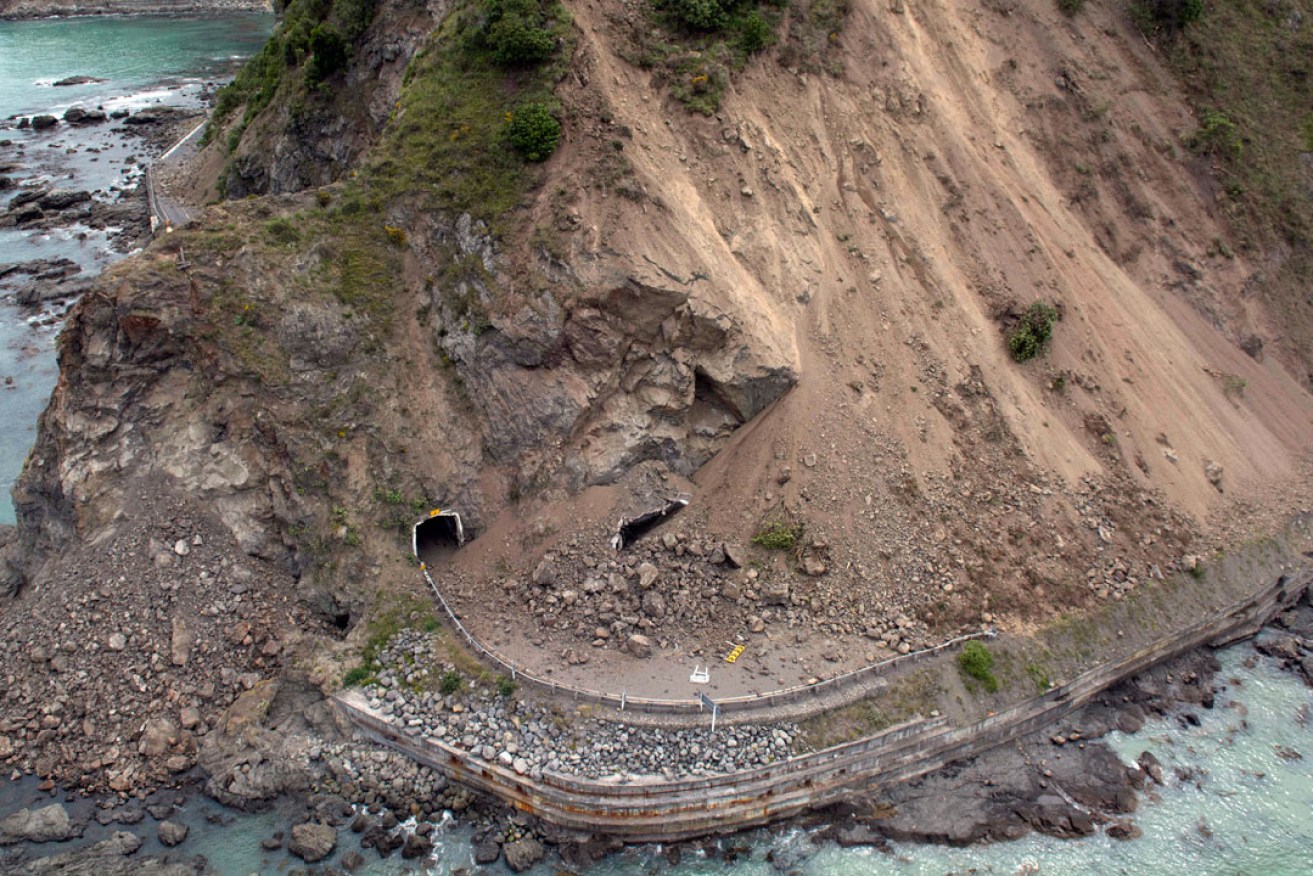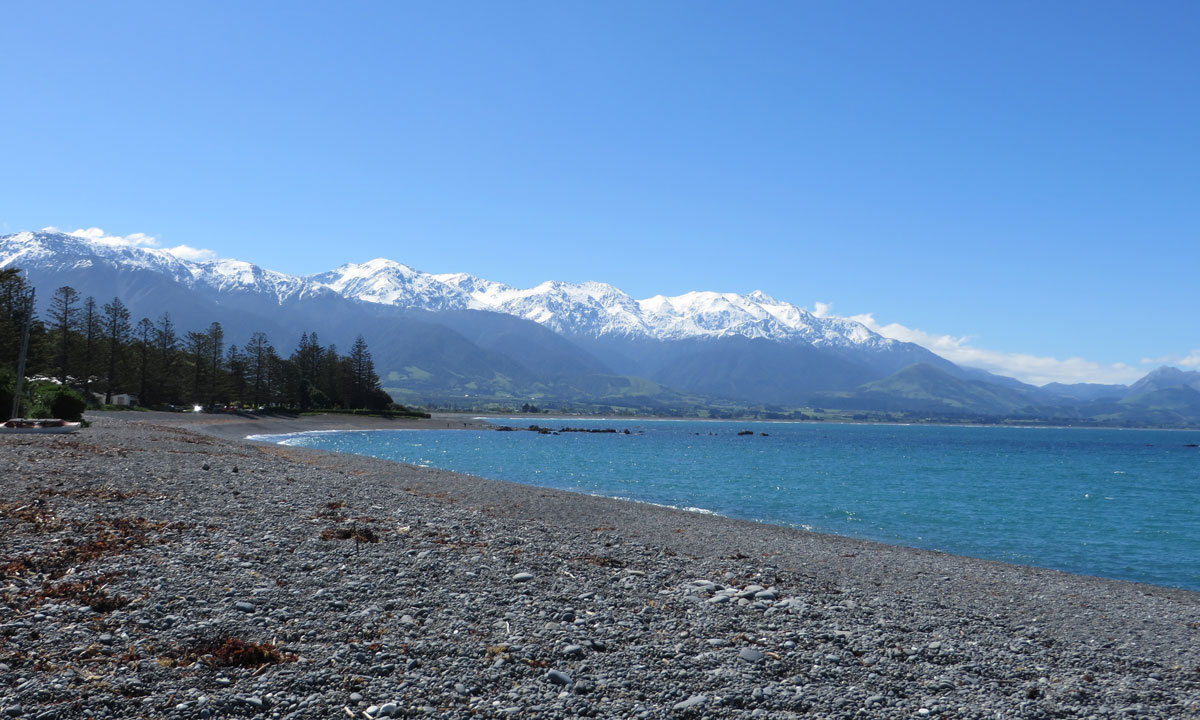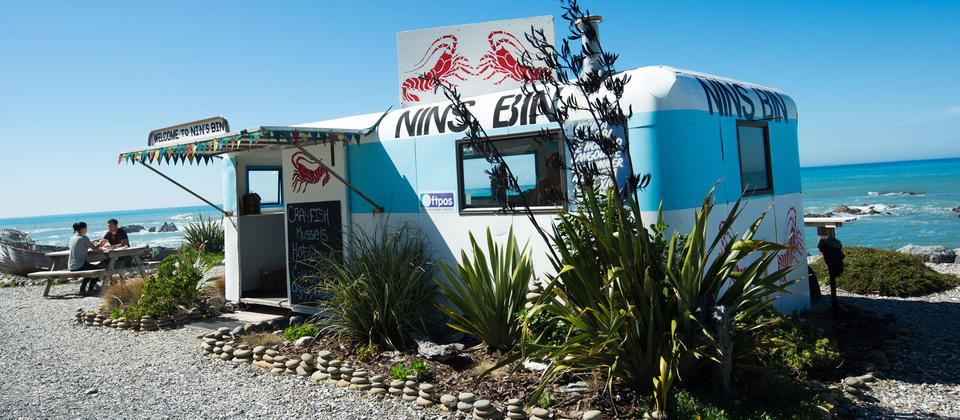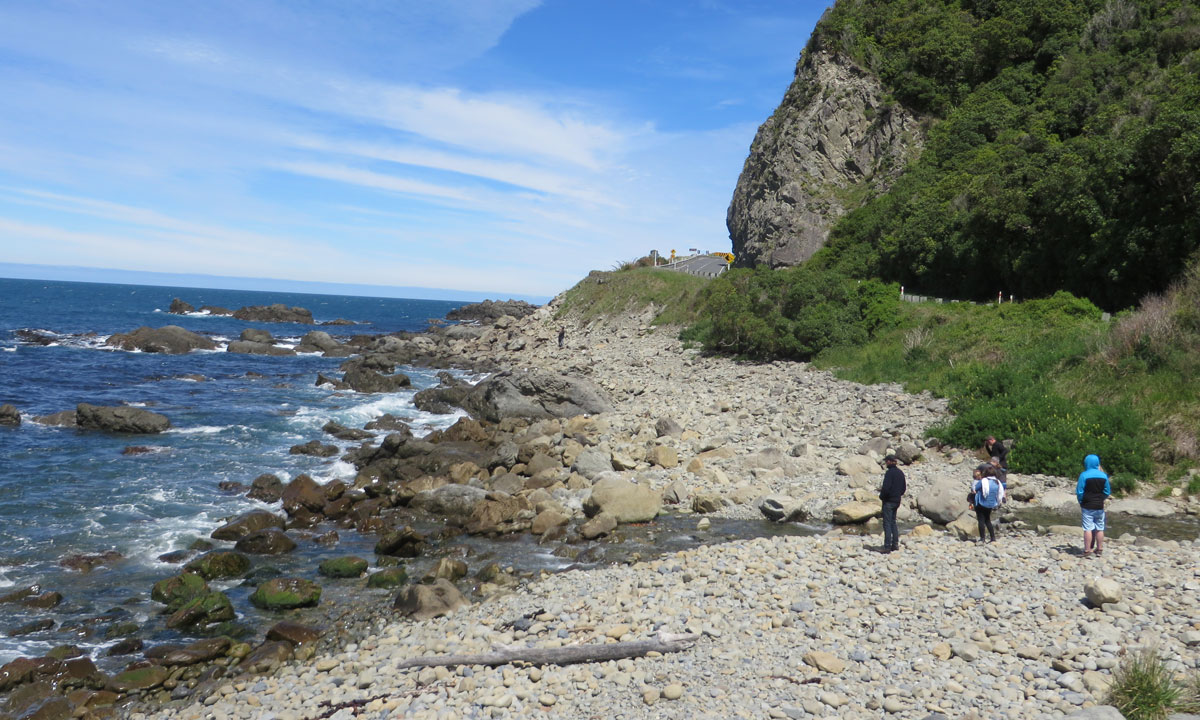Stay strong, Kaikoura – my heart aches for you
Just two weeks ago I was travelling along this road on my way to what is arguably one of the most beautiful coastal towns in the world – a place now left isolated and broken after the magnitude-7.5 earthquake that rocked New Zealand yesterday.

An aerial photo shows damage to the main highway near Kaikoura following the earthquake. Photo: AP
Fresh whitebait and crayfish fritters served from coastal caravans and families of fur seals sunning themselves on rocks are synonymous with the New Zealand town of Kaikoura.
Located on a peninsula on the South Island’s east coast, Kaikoura has long been a popular holiday and stopping-off spot for Kiwi families.
Some people go gaga over golden sandy beaches with warm, gently lapping water, but give me a wild, rocky coastline with crashing waves any day. Add in a stony shoreline with a snow-capped mountain backdrop and a character that is uniquely Kiwi and, well, you pretty much have nirvana.
That’s Kaikoura.

The beachfront at Kaikoura. Photo: Suzie Keen / InDaily
It’s been one of my favourite places in the world since I was a kid. I never much cared for those whitebait patties, but watching my Mum and Dad tuck into a stack of them whenever we stayed there is one of those enduring memories that can make you come over a bit misty.
I’ve travelled the world since then. Seen the harsh beauty of the Australian outback and the Scottish highlands, myriad natural treasures in America, Europe and Asia, but that little New Zealand town still holds the biggest piece of my heart.
It’s changed a lot in recent decades.
Where it once was a centre for the whaling industry in the 1800s, now it is known for its whale-watching boat tours and scenic flights, where people can spot humpback whales, pilot whales, blue whales, southern right whales and more.
In the high season, tourists also flock to the town for other eco activities – swimming with dolphins and seals, bird watching, hiking, kayaking and the like.
Yet Kaikoura – whose Maori name translates to “meal of crayfish” (kai meaning food, and koura meaning crayfish – hasn’t lost its rustic Kiwi charm through the tourism transformation. Amid new accommodation options, the old homes and baches (holiday shacks) remain, steadfastly refusing to be cowered by the campervans lining the tiny main street.

Nins Bin, a popular seafood takeaway at Kaikoura.
It’s still pretty sleepy in the cooler months, and when we stayed on a long weekend just recently, local businesses were welcoming the return of visitors after a long winter.
“We’re just happy to see people again!” said the sales assistant in one clothing shop.
At the mini-golf course, before a fiercely fought round of putt-putt, the new owners of the business excitedly told us of the work they had undertaken to open in time for spring.
It’s heartbreaking to think what the future will hold for these and the several thousand other locals whose lives and livelihoods have been rocked by yesterday’s 7.5-magnitude earthquake, which was centred in the South Island region of North Canterbury.
Two people died – one at Kaikoura’s heritage-listed Elms Homestead – in the quake, which has wreaked widespread major damage as far away as the capital of Wellington, in the North Island.
Tourists certainly aren’t flocking to Kaikoura now. Instead, both they and some residents are leaving by either boat or helicopter – the only way in and out of the town which has been isolated by landslides and road fissures on the main highway.
Power and communications to Kaikoura are still intermittent, and there is reportedly just three days’ worth of water remaining.
It sends shivers down the spine to see the landslides covering the roads and blocking entrances to the tunnels we travelled through just a fortnight ago. The Main Trunk Rail Line along the Kaikoura coast is, in the Kiwi lingo, “munted”.
Imagine the potential loss of life if the earthquake had struck during daylight hours when people were travelling those roads and tracks.

Tourists look for seals north of Kaikoura near the Ohau Waterfall, a seal breeding ground since destroyed by the quake. Photo: Suzie Keen / InDaily
Kiwis are an optimistic and resilient lot. Revisiting Christchurch after the 2011 earthquake that killed 185 people, you can’t help but be impressed by the way the city and its residents are rebuilding, block by block, building by building.
But the mood after these latest quakes is bleak. The constant aftershocks – felt across large swathes of the country – are rattling nerves, and the damage bill will likely be in the billions.
It’s hard to imagine that Kaikoura, and some of the other hardest-hit towns, will ever be quite the same again.
To borrow the Maori phrase currently trending on social media: Kai kaha (stay strong), Kiwis.
Meanwhile, the earth keeps rumbling.
Suzie Keen, InDaily’s features editor, is a Kiwi who grew up in Canterbury, formerly worked as a journalist in Christchurch, and spent four days on holiday in Kaikoura earlier this month.




